As the world is developing rapidly and transforming into a concrete jungle, the need for geotechnical instrumentation and monitoring has increased. Geotechnical instruments are the sensors that are used in the geotechnical field or large civil engineering projects to monitor the health of the structures.
The range of geotechnical instruments and their application field is limitless. We are living in an era of magnificent structures. Be it the impressive Gotthard Base Tunnel or the skyscraper Burj Khalifa, their existence is impossible without geotechnical monitoring and instrumentation.
Let’s dig deeper into the fascinating world of geotechnical sensors, their types, working, and applications.
What is Geotechnical Monitoring?
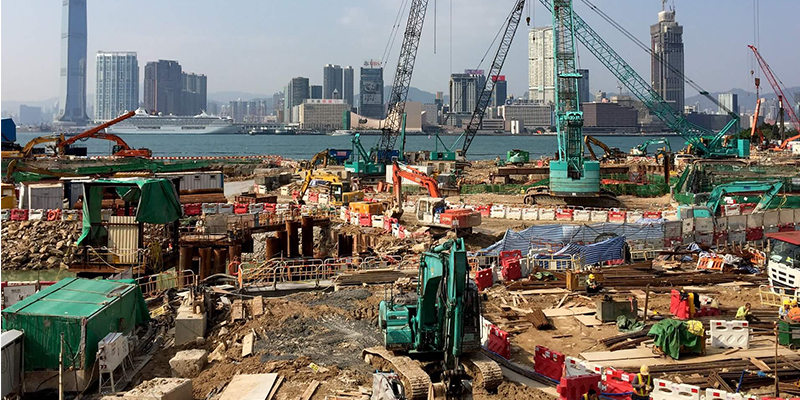
Geotechnical monitoring is a branch of geotechnical engineering that deals with constant health check-ups of the structures. The civil engineering projects require an extensive amount of monitoring pre and post-construction to ensure everyone’s safety.
Monitoring begins right from surveying the construction land and nearby areas and continues until the structure is built. For buildings, structures bridges, etc., it is recommended that Structural Health should be continuously monitored to ensure proper maintenance and safety of man as well as the material.
Encardio Rite is a 57-year-old geotechnical monitoring company that provides indigenous online monitoring services for civil engineering structural projects and water resources with remote access to collected data in real-time.
Geotechnical Monitoring Company; Encardio Rite is one of the few geotechnical instrumentation and monitoring companies in the world that manufactures geotechnical sensors and has developed advanced integrated software in-house, for processing and displaying monitored data along with web-based monitoring solutions.
Read More: Geotechnical Instrumentation & Monitoring: Services & Types
Why Geotechnical Monitoring is essential?
A structure can fail because of numerous reasons like design error, geological instability, poor maintenance, deterioration of construction material, etc.
However, a good geotechnical monitoring program can prevent such failures by providing the following information:
Geotechnical Monitoring during construction:
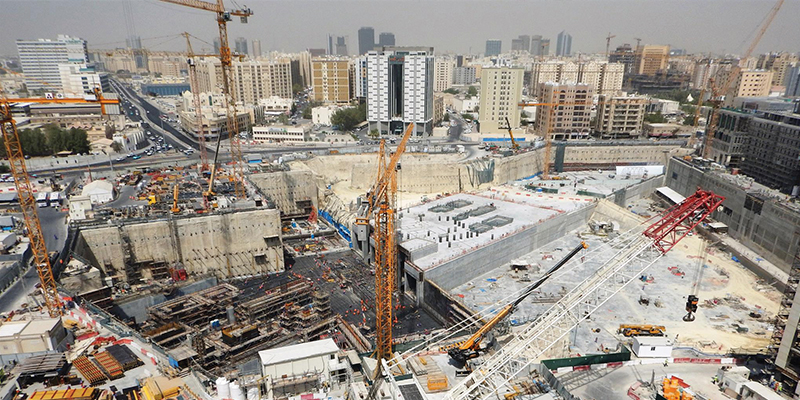
Geotechnical settlements are monitored to:
- Verify the hypothesis and the assumptions of design
- Monitor safety during construction
- Measure the change in parameters during construction
- Ensure that the interface of construction with adjacent structures and foundation is sound
- Certify the performance of the new construction
Geotechnical Monitoring after construction is completed:

Geotechnical After-Construction Monitoring includes:
- Performance monitoring for safety during the life of the structure
- Evaluation of the effect of the structural operation on parameters like stress, strain, water, pressure, inclination, deflection, etc.
- Comparison of observed data with design assumptions
Geotechnical Monitoring for Research
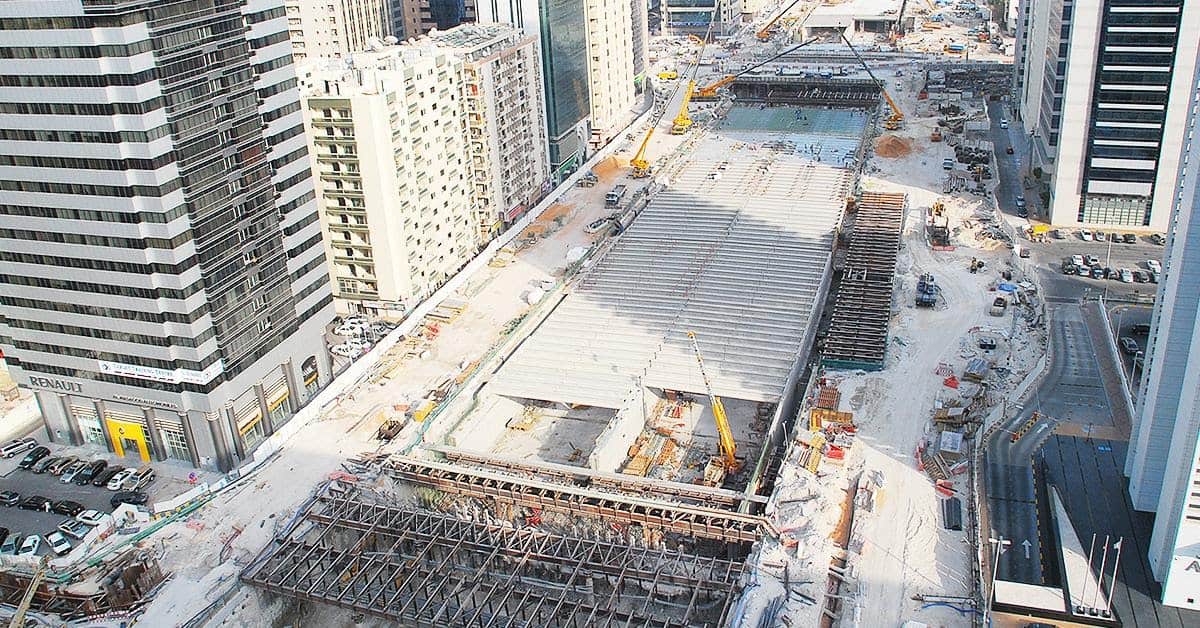
Geotechnical Research & Development includes:
- Determination and evaluation of design parameters
- Testing of new construction materials and techniques
- Study of the laws of behavior of soil, rock, and man-made materials used in the construction of such structures.
Advantages of Geotechnical Monitoring
1. Design Verification
- Instruments are used to verify design assumptions and to check that performance is as predicted.
- Instrument data from the initial phase of a project may reveal the need (or the opportunity) to modify the design in later phases.
2. Construction Control
Instruments are used to monitor the effects of construction. Instrument data can help the engineer determine how fast construction can proceed without the risk of failure.
3. Safety
- Instruments can provide early warning of impending failures, allowing time for safe evacuation of the area and time to implement remedial action.
- Safety of adjacent structures
- Safety monitoring requires quick retrieval, processing, and presentation of data so that decisions can be made promptly.
4. Legal Protection
Instrument data can provide evidence for the legal defense of designers and contractors against owners of adjacent properties if they claim that construction has caused damage.
5. Performance
- Instruments are used to monitor the in-service performance of a structure.
- Monitoring parameters such as leakage, pore-water pressure, and deformation can indicate the performance of a dam.
- Monitoring loads on tiebacks or rock bolts and movements within a slope can indicate the performance of a drainage system installed in a stabilized slope.
What is Geotechnical Instrumentation?
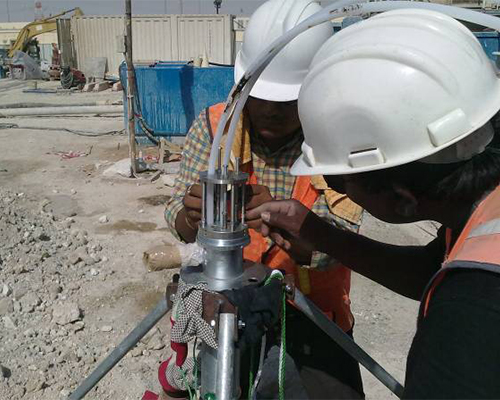 Figure 1: BHE Installation at DTS T02 Project, Abu Dhabi
Figure 1: BHE Installation at DTS T02 Project, Abu DhabiWe get a lot of questions regarding what is geotechnical instrumentation. Let’s explain this better.
Instrumentation plays a key role in the safety monitoring of structures and people, providing necessary information on its performance and detecting problems at an early stage. The extent and nature of instrumentation not only depends on the complexity of the structure but also the potential for loss of life and property nearby. This information is critical for the structure’s owner who is directly responsible for any consequences of its failure.
Geotechnical monitoring instruments include different types of sensors used for measuring pore pressure, groundwater level, water flow, lateral movement, deformation, stress, strain, and temperature. It also includes geodetic targets measured using surveying techniques.
Advances in geotechnical instrumentation, surveying technologies, and data transmission systems make it possible to monitor dams, bridges, railways, metros, buildings, tunnels, etc. from any remote location, conveniently and economically. The data logger and total station automatically collect readings from the installed sensors and targets, at selected intervals. An alarm is triggered or SMS is automatically sent if any of the predetermined trigger values are exceeded.
Data is transmitted to a remote data management system, at a central server or cloud, where large quantities of collected data are processed, evaluated, and presented as meaningful information.
The same becomes accessible to the concerned authorities, at their desk or mobile devices through the World Wide Web.
Scope of Geotechnical Instruments in Various Monitoring Fields
Dam Monitoring Solutions
| Parameters Monitored | Water level, Water pressure, and seepage Lateral ground movement, Deformation, Displacement Stress, Strain, Load Temperature Tilt, Surface Settlement |
| Services Offered | Cloud-based web data presentations for online as well as manual data Sub-surface and surface monitoring of various parameters Pre and post-construction building condition survey Laser Scanning |
| Geotechnical Instrumentation Range | Piezometers Earth Pressure Cells Strain Gauges Inclinometers Plumb Lines Extensometers Crack Meters, Joint Meters Temperature Meters
Load Cells Data Loggers Geodetic Targets Database Management System |
Tunnel Monitoring Solutions
| Parameters Monitored | Lateral ground movement, Deformation, Displacement
Stress, Strain, Load
Temperature
Tilt, Surface Settlement |
| Areas Monitored | Underground tunnels and excavations
Struts in cut and cover constructions
Diaphragm Walls
Pile foundations and sheet piles
Adjoining buildings, structures, pavements, etc. |
| Services offered | Cloud-based web data presentations for online as well as manual data
Sub-surface and surface monitoring of various parameters. Pre and post-construction building condition survey
Laser Scanning |
| Geotechnical Instrumentation Range | Piezometers
Earth Pressure Cells
Strain Gauges
Inclinometers
Plumb Lines
Extensometers
Crack Meters, Joint Meters
Temperature Meters
Load Cells
Data Loggers
Geodetic Targets
Database Management System |
| Parameters Monitored | Lateral ground movement, Deformation, Displacement
Stress, Strain, Load
Temperature
Tilt, Surface Settlement |
| Areas Monitored | Underground tunnels and excavations
Struts in cut and cover constructions
Diaphragm Walls
Pile foundations and sheet piles.
Adjoining buildings, structures, pavements, etc. |
| Services offered | Cloud-based web data presentations for online as well as manual data
Sub-surface and surface monitoring of various parameters
Pre and post-construction building condition survey
Laser Scanning |
| Geotechnical Instrumentation Range | Piezometers
Earth Pressure Cells
Strain Gauges
Inclinometers
Plumb Lines
Extensometers
Crack Meters, Joint Meters
Temperature Meters
Load Cells
Data Loggers
Geodetic Targets
Database Management System |
Structural Monitoring Solutions
| Parameters Monitored | Tilt Monitoring
Crack Monitoring
Settlement Monitoring
Lateral Ground Movement
Temperature Monitoring
Pore Pressure Monitoring |
| Monitoring Areas | Safety of high-rise buildings during construction
Safety of buildings and infrastructures during construction activity in the vicinity Safety of old and depleted buildings
Safety of structures subjected to long-term movement or degradation of materials
Safety of monuments and structures of historical importance
Safety of structures in landslide-prone areas |
| Geotechnical Instrumentation Range | Piezometers
Earth Pressure Cells
Strain Gauges
Inclinometers
Plumb Lines
Extensometers
Crack Meters, Joint Meters
Temperature Meters
Load Cells
Data Loggers
Geodetic Targets
Database Management System |
Types of Geotechnical Instruments
Multiple geotechnical sensors are used in the field of geotechnical monitoring. Encardio Rite deals with a wide range of geotechnical instruments which include piezometers, extensometers, data loggers, strain gauges, load cells, pressure cells, etc.
Let’s have a look at each one of them.
Piezometers or Pore Pressure Meters
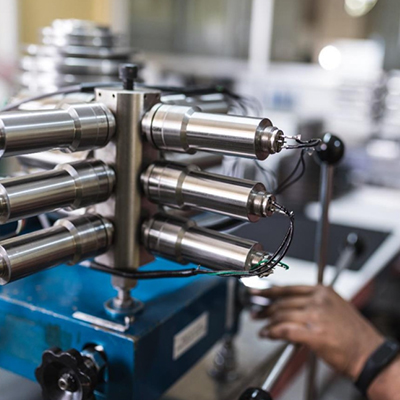
Pore pressure measurement is crucial for large civil engineering projects like high-rise buildings, tunnels, dams, etc. The pressure experienced by the water accumulated in the pores of earth materials, concrete structures, or rocks is called pore water pressure.
The pore water pressure is measured by a piezometer sensor which is also popularly known as a ‘pore pressure meter’. Encardio Rite deals with different types of piezometers according to the application field.
Casagrande is the simplest type of piezometer consisting of a Casagrande tip connected to the lengths of the extension pipes. The water level inside the pipe is measured through a dip meter.
The electric piezometer, generally a vibrating wire type, is most commonly used, as it provides hassle-free, accurate, and real-time data.
Read More: Piezometers: Types, Functions, & How it works?
Types of Piezometers
Encardio Rite deals with the following models of piezometers to monitor pore pressure in standpipes, boreholes, embankments, fully and partially saturated natural soils, rolled-earth fills, and the interface of retaining structures.
Model EPP-10/10SP Casagrande Piezometer/Standpipe
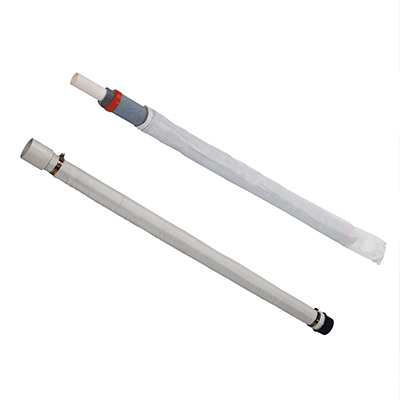
Groundwater table monitoring is significant because of depleting groundwater reserves. The measurement of groundwater level can be done by open standpipes or by constructing observation wells.
The Model EPP-10 & Model EPP-10SP open standpipe is used to monitor groundwater levels in boreholes near dams, rivers, high-rise buildings, farmhouses, factories, institutes, etc.
Model EPP-10/6 Water Level Indicator
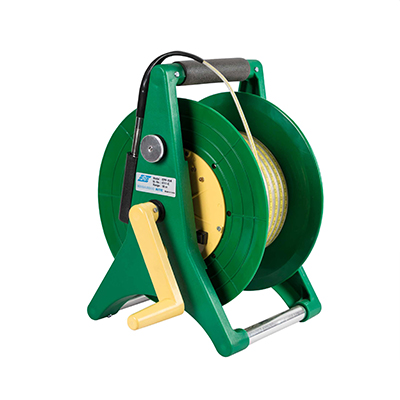
The Model EPP-10/6 water level indicator is used to measure water level in boreholes, wells, Casagrande piezometers, and standpipes. It is accurate, robust, lightweight as well and convenient to use.
Model EPP-30V Vibrating Wire Piezometer
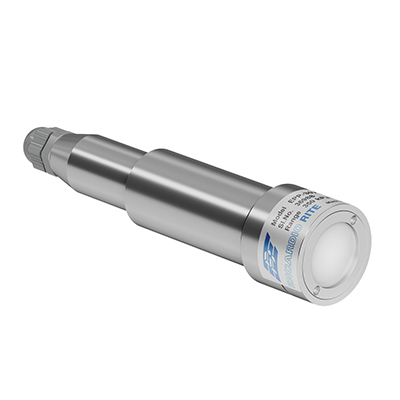
The Model EPP-30V vibrating wire piezometer is made with the latest vibrating wire technology to provide a remote digital readout of fluid and/or water pressure in standpipes, boreholes, embankments, fully and partially saturated natural soil, rolled earth fills, and the interface of retaining structures.
Model EPP-40V Vibrating Slim Wire Piezometer
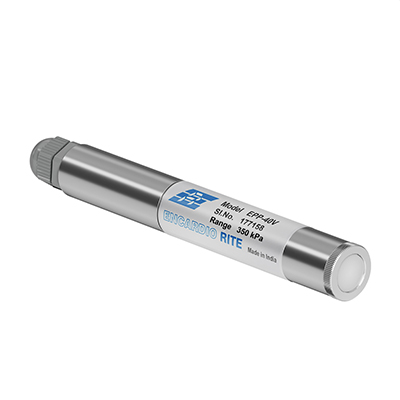
The Encardio Rite Model EPP-40V small-size vibrating wire piezometer is designed for measuring pore water pressure in small-diameter boreholes & standpipes.
Model EPP-50V Vibrating Wire Push-In Piezometer
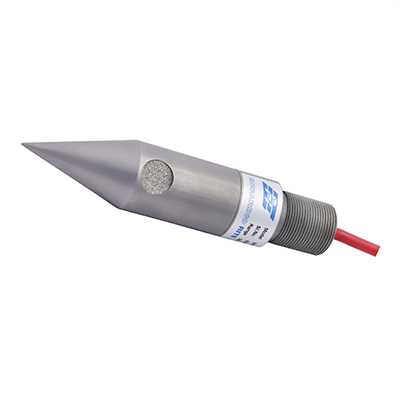
The Encardio Rite Model EPP-50V push-in vibrating wire piezometer is designed to measure pore water pressure in soft soil, clays, and landfills in earth-fill dam foundations & structures.
Model EPP-60V Vibrating Wire Low-Pressure Piezometer
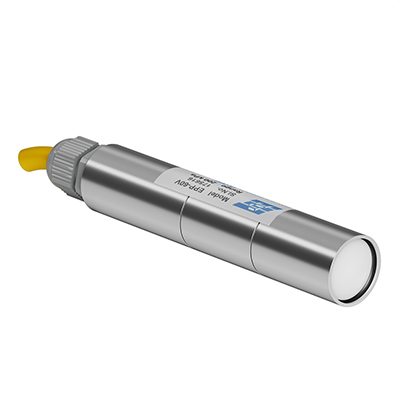
The Model EPP-60V is used to measure low water pressure. It provides significant quantitative data on groundwater level, groundwater pressure & its variations with time.
Model EPU-20G Bourdon Gage Type Uplift Pressure System
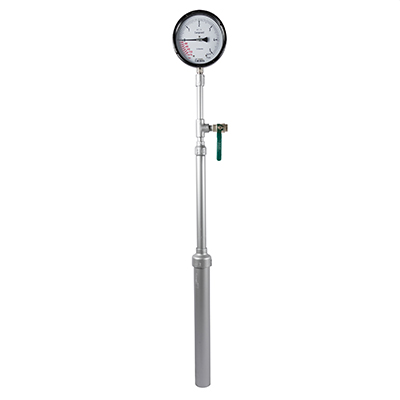
The Model EPU-20G uplift pressure meter is used for monitoring the uplift pressure of water in the foundation of dams/concrete structures and the stability of foundations of embankments in dams, tunnels, and other underground works.
Model EPU-20V Vibrating Wire Uplift Pressure System
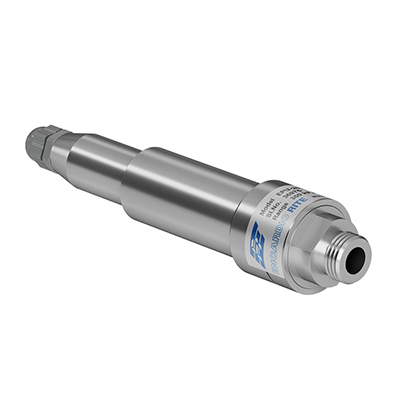
The Model EPU-20V sensor is made with the latest vibrating wire technology to provide a remote digital readout of fluid and/or water pressure in standpipes, boreholes, and embankments.
Read More: What are the different types of piezometers?
Inclinometers
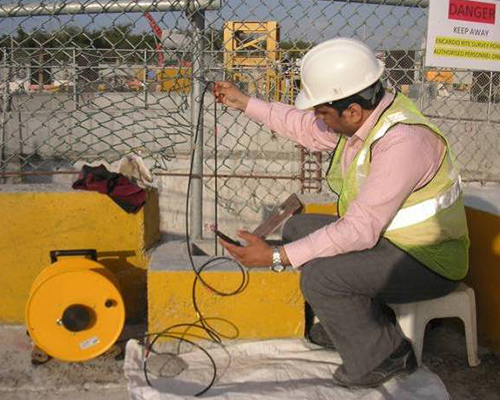 Figure 2: Inclinometer Monitoring T01 Project, Abu Dhabi
Figure 2: Inclinometer Monitoring T01 Project, Abu DhabiAn inclinometer is a transducer that measures the magnitude of the inclination angle or deformation in any structure. The bent is either depicted in percentage or degrees concerning gravity.
Inclinometers are used to measure the slope gradient during activities like tunneling, excavation, and dewatering. The geotechnical element here is that such activities affect the ground that supports the structure.
Read More: Inclinometers: Types, How they work, & Functions
Types of Inclinometers
Model EAN-26M Digital Inclinometer System
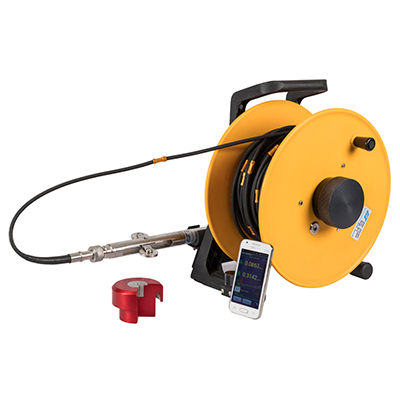
Encardio Rite Geotechnical products include the Model EAN-26M which is one of the most advanced MEMS digital inclinometer systems. It depends on the capability of high computational power and large high-resolution color display of today’s Android mobile phones as a readout and data storage unit.
Model EAN-52MV IPI with GPRS/GSM Transmission
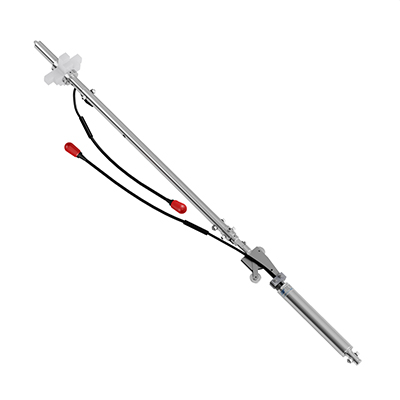
Encardio Rite Model EAN-51M vertical in-place inclinometer is used to measure the lateral movement of earthworks or structures. The geotechnical sensors are used in critical applications where real-time monitoring and early warning are required to protect life and valuable assets.
Model EAN-53MW IPI with RF Transmission
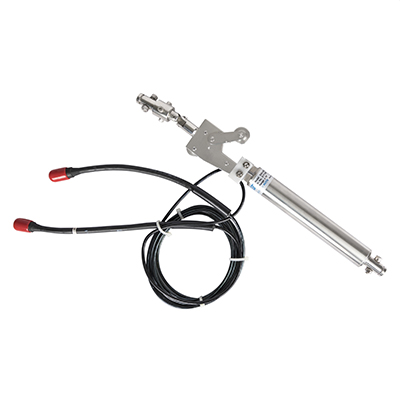
Encardio Rite Model EAN-53MW is the most advanced wireless in-place inclinometer (IPI) system, designed to measure the lateral movement of earthworks or structures. This is used in critical applications where real-time monitoring and early warning are required to protect life and valuable assets.
Model EAN-61MS 3D Inclinometer with Settlement
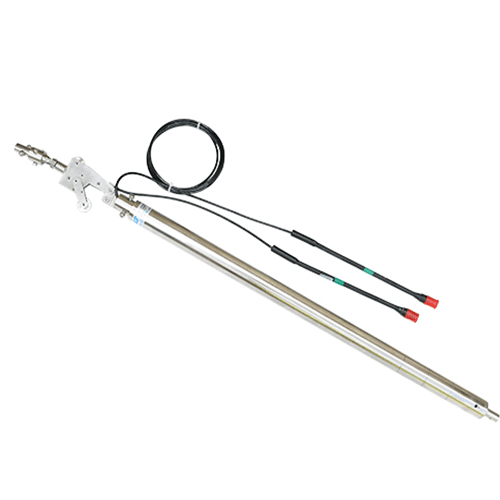
Encardio Model EAN-62MS is an in-place 3D inclinometer with settlement (IPIS) used wherever later movement along with settlement/heave is to be monitored in a borewell or on a structure. A one-of-a-kind Geotechnical Sensors, the IPIS finds wide application in the measurement of lateral movement and geotechnical tests on soils, earthworks, slopes or structures like retaining/diaphragm walls, embankments, deep foundations or dams, etc. It is also used in the monitoring of landslide areas.
Tilt Beam Sensors
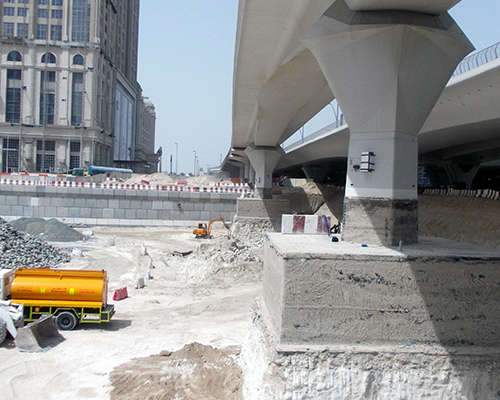 Figure 3: Tiltmeter installed on a bridge in UAE
Figure 3: Tiltmeter installed on a bridge in UAEA tilt sensor/tilt meter is designed to measure the change in tilt and monitor inclination/vertical rotation in vertical structures. The tilt sensor produces an electrical signal that is proportional to the degree of tilt in multiple axes (Uniaxial and biaxial).
Tilt sensors measure the tilting position concerning its original reference. It provides important information about both the vertical and horizontal inclination tilt.
The main purpose of using a tilt sensor is to measure tilt changes in structures due to construction activities such as tunneling, excavation, and dewatering that affect the ground that supports the structure.
The tilt sensor works on the Micro-Electro-Mechanical Systems (MEMS) technology to provide a digital output.
Types of Tilt Meter
Model EAN-41M With in-built Tilt Sensor
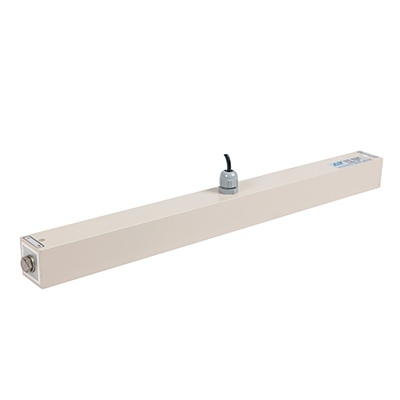
The EAN-41M beam sensor consists of the MEMS sensor housed inside the beam (1, 2, or 3 m long and 38 x 38 mm, aluminum). It can be mounted both vertically and horizontally and has long-term reliability.
Model EAN-70M Portable Tilt Meter (MEMS)
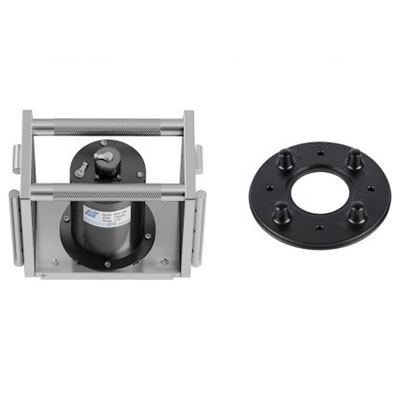
The Encardio Rite Model EAN-70M portable tiltmeter is suitable for monitoring the change in the inclination of a structure. It is a high-resolution tilt meter using the same proven technology as used in an inclinometer probe.
Model EAN-90M/92M Tilt Meter
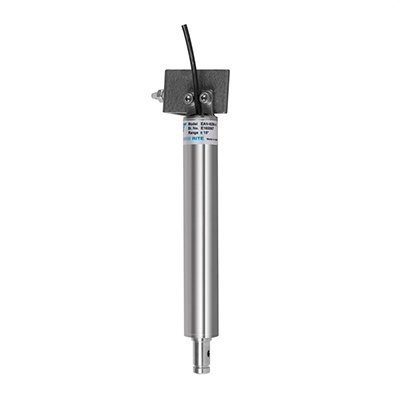
The Encardio Rite Model EAN-90M Analog Tilt Meter and Model EAN-92M Digital Tilt Meter are suitable for monitoring inclination and vertical rotation in structures. It is a high-resolution tilt meter, is rugged in construction, and has excellent temperature stability.
Model EAN-91M Box-type Analog Tilt Meter
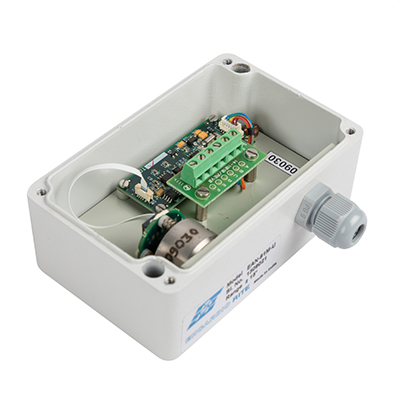
The Encardio Rite Model EAN-91M tilt meter is suitable for monitoring small changes in the inclination and vertical rotation of structures. The EAN-91M tilt meter can be directly fixed on a wall/structure.
Model EAN-93M/EAN-93M-B Box-type Tilt Sensor
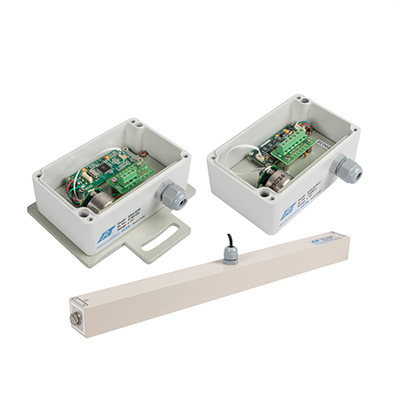
The Model EAN-93M and EAN-93M-B beam sensors consist of tilt meter enclosures fixed onto a beam (1, 2, or 3m long) respectively.
Model EAN-95MW Wireless Tilt Meter
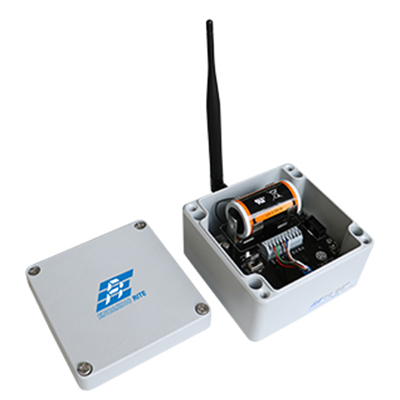
The Encardio Rite Model EAN-95MW wireless tilt meter is suitable for remote monitoring of small changes in the inclination and vertical rotation of structures. The tilt meter combines a high-precision MEMS sensor with a radio transmission network to provide accurate tilt data.
The wireless mesh network used in the system has the advantage of reliable data transfer over long distances, without any delay.
Model ESDL-30MT Tilt Meter with GPRS/GSM Transmission
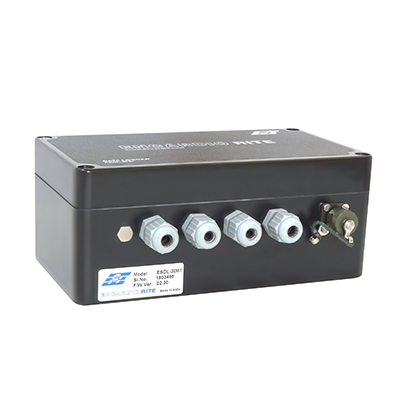
The Model ESDL-30MT tilt meter consists of one uniaxial or biaxial MEMS tilt sensor mounted inside an automatic SDI-12 digital interface data logger. It is a complete unit in itself to monitor tilt at any location.
Strain Gauges
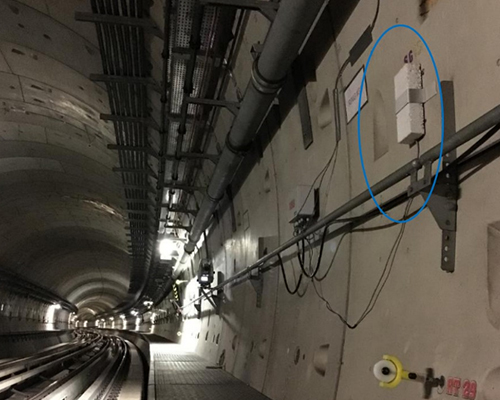 Figure 4: Strain gauge installed inside a tunnel
Figure 4: Strain gauge installed inside a tunnelStrain Gauges are one of the vital geotechnical sensors that measure strain in underground cavities, tunnels, buildings, concrete, masonry dams, bridges, embedment in soil/concrete, etc. Any basic strain gauge sensor consists of an insulating flexible metallic foil backing. To measure the stress, the strain gauge is attached to the object using an adhesive/welding.
The deformation in the object causes the change in frequency of the vibrating wire. Strain gauges offer the ability to measure the effect of loads, settlement, or other changes in a structure.
They record strain, which is a dimensionless measure of deformation. Stress is related to strain by a material’s properties and is predictable within a certain range of applied strain.
Read More: Strain Gauge: Principle, Types, Features and Applications
Types of Strain Gauges
Model EDS-11V Hermetically Sealed Vibrating Wire Strain Gauge
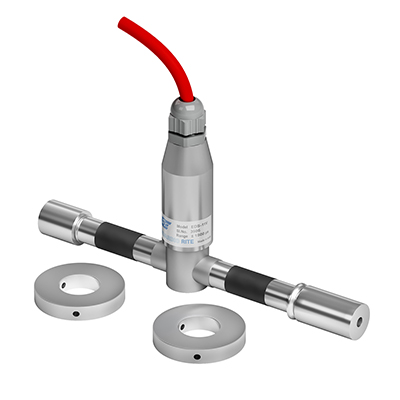
Encardio Rite Model EDS-11V is a highly resilient and reliable strain gauge. It is suitable for embedment in mass concrete or for surface mounting by welding on steel structures.
Model EDS-12V Vibrating Wire Sister Bar Strain Meter
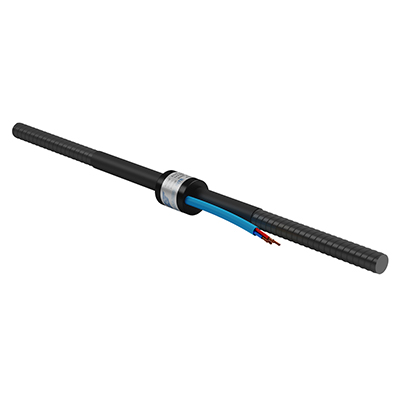
Encardio Rite’s Model EDS-12V Vibrating Wire Sister Bar is used to measure strain in concrete structures such as diaphragm/slurry walls, piles, tunnel lining, bridge abutments, foundations, dams, etc.
Model EDS-20V SW Vibrating Wire Spot Weldable Strain Gauge
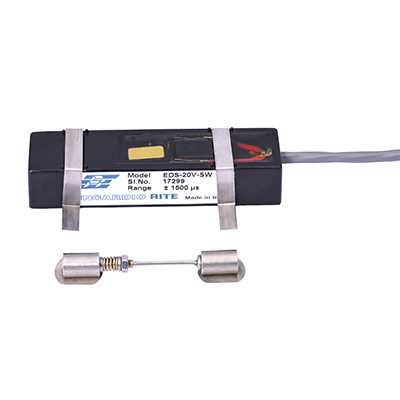
Model EDS-20V-SW vibrating wire strain gage can be spot welded or epoxy bonded on steel structures and struts. It can also be epoxy bonded on concrete structures.
Model EDS-20V-AW Vibrating Wire Arc Weldable Strain Gauge
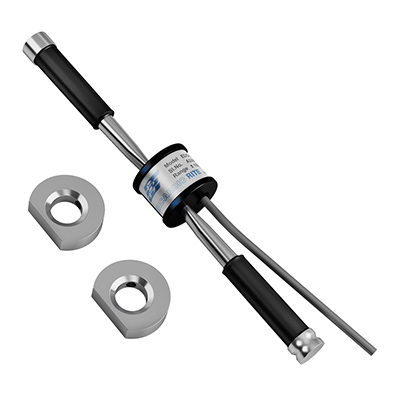
The Encardio Rite Model EDS-20V-AW strain gauges are intended primarily for long-term strain measurement and are suitable for surface mounting by welding on steel structures such as bridges, piles, wye sections, pressure shafts, tunnel linings, supports, etc.
Model EDS-20V-E Vibrating Wire Embedment Strain Gauge
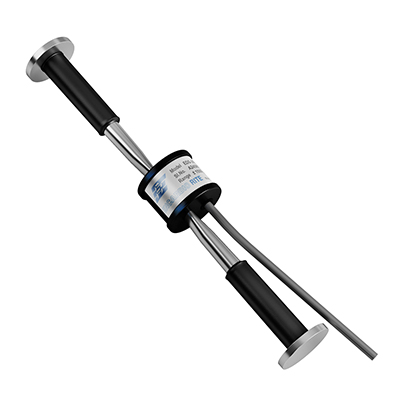
The Encardio Rite Model EDS-20V-E strain gauge is primarily intended for strain measurement in pile foundations, segment lining of tunnels and concrete structures, etc. It is suitable for soil or concrete.
Model EDS-21V-AW Arc Wieldable Strain Gauge
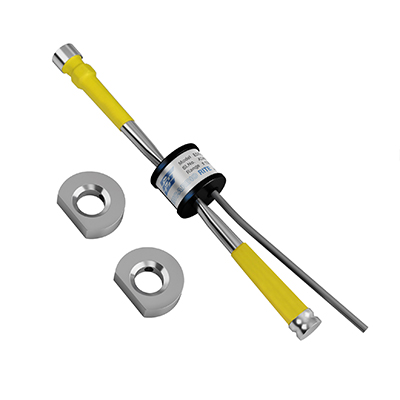
Model EDS-21V-AW is designed to measure strain in steel or on the concrete surface of the composite structure. It is suitable for surface mounting by welding on steel structures such as bridges, piles, wye sections, pressure shafts, tunnel linings support, etc.
Model EDS-21V-E Embedment Strain Gauge
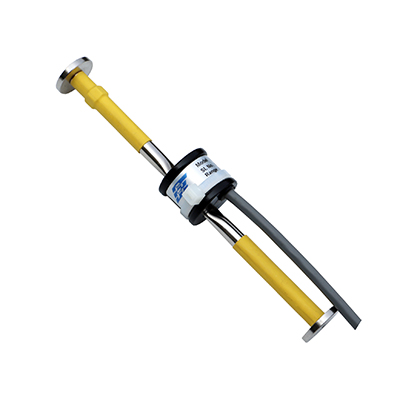
Model EDS-21V-E vibrating wire strain gauge is designed to measure strain in underground cavities, tunnels, buildings, concrete and masonry dams, etc.
Read More: Types Of Strain Gauges: Construction & Specifications
Load Cells
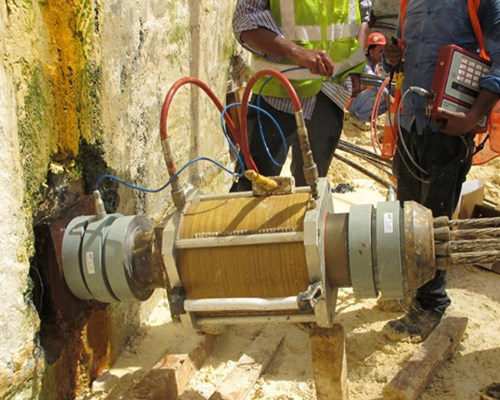
Load Cells are a type of transducer that converts force into measurable electrical output. However, they don’t work without being paired up with external sensors such as strain gauges. Strain Gauges are thin elastic materials made up of stainless steel and are fixed inside the load cell. The force exerted on the load cell tends to deform the strain gauge.
This deformation causes a change in resistance which is then converted to the readable unit to determine the weight of an object.
Read More: Load Cells: Types, How It Works, Applications, & Advantages
Types of Load Cells
Model ELC-150S-H High Capacity Compression Load Cell
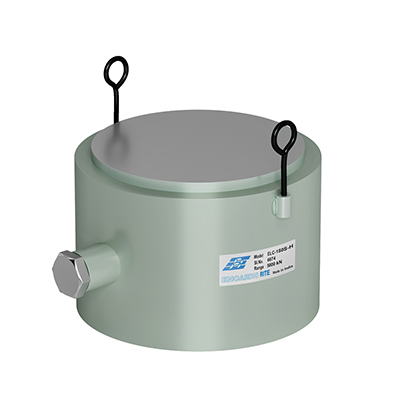
Model ELC-150S-H is a resistive strain gauge-type load cell. It is designed to measure large compressive loads or axial forces. The load cell is used extensively in pile testing.
Model ELC-210S Resistive Strain Gage Type Compression Load Cell
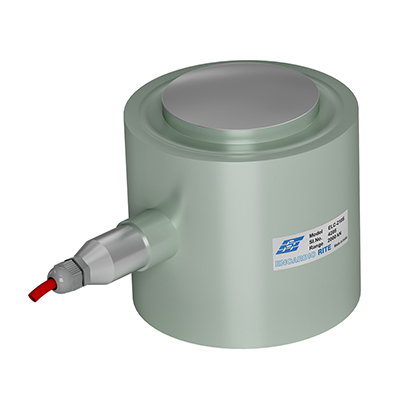
Model ELC-210S is a resistive strain gauge-type load cell. It is designed to measure large compressive loads or axial forces.
Model ELC-30S Resistive Strain Gage Type Center Hole/Anchor Bolt Load Cell
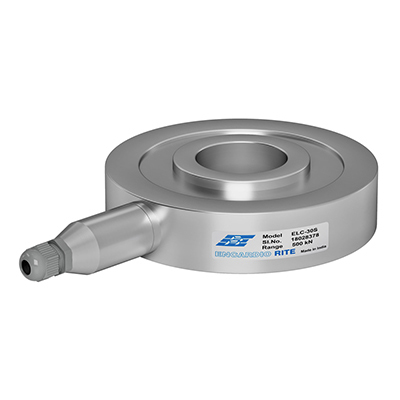
The Model ELC-30S is a resistive strain gauge-type load cell. It is used to determine the load in rock bolts, tieback anchors, etc. through a center hole.
Model ELC-30S-H Resistive Strain Gage Type Center Hole/Anchor Bolt Load Cell
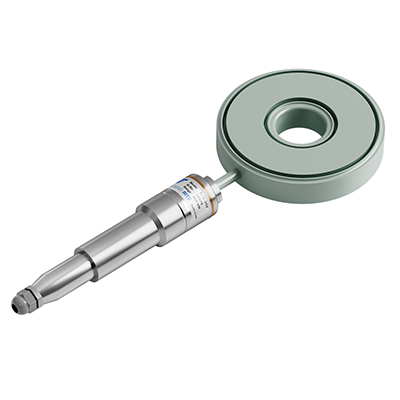
The Model ELC-30S-H is a high-capacity center hole resistive strain gauge type load cell. It is used to determine the load in rock bolts, tieback anchors, etc through a center hole.
Model ELC-31V Vibrating Wire Hydraulic Center Hole-Anchor Bolt Load Cell
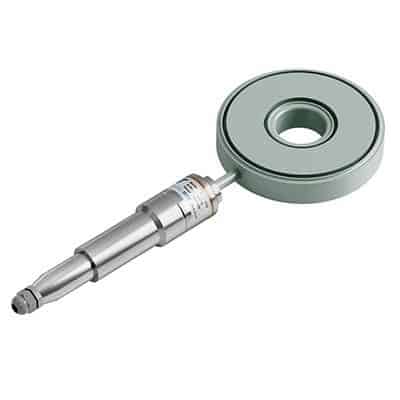
Model ELC-31V is a vibrating wire-type center hole load cell used to determine the load in rock bolts, tieback anchors, etc. It is filled with fluid with a vibrating wire pressure sensor attached to it, to convert the load into a frequency output.
Model ELC-32V Vibrating Wire Center Hole-Anchor Bolt Load Cell
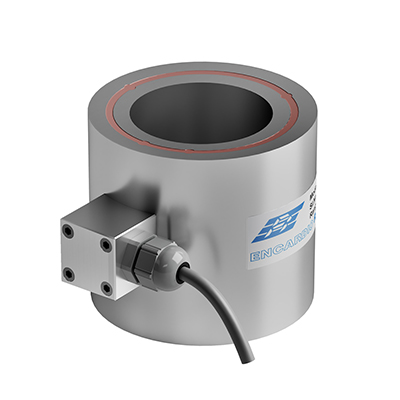
Model ELC-32V is a vibrating wire-type center hole load cell used to determine the load in rock bolts, tieback anchors, etc.
It comprises a cylinder of high-strength martensitic stainless steel with three vibrating wire strain gauges mounted at 120 degrees to each other to minimize the effect of uneven and eccentric loading. To determine the load, the average of 3 readings is taken.
Pressure Cells
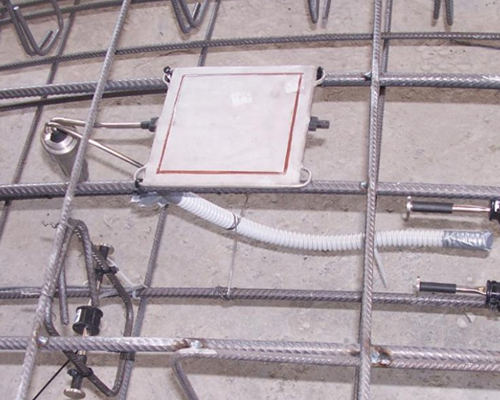
A pressure sensor is a transducer that converts pressure into a measurable electrical output.
The main purpose of using a pressure cell is to measure total stress in various construction fields or the amount of stress being transferred. The vibrating wire pressure transducer works on the vibrating wire technology to provide a digital output.
Read More: Pressure Cells: Types, Working Principle, & Applications
Types of pressure cells
Model EPS-30V-C Concrete Pressure Cell
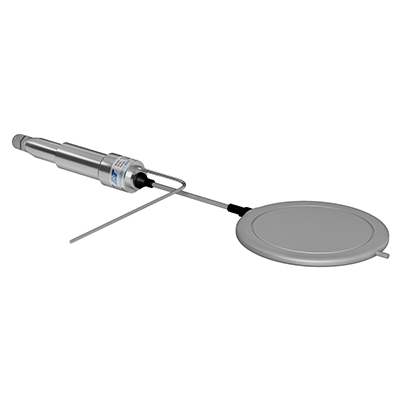
Model EPS-30V-C Concrete Pressure Cell to measure the orientation and the magnitude of total pressure and stress distribution within the dam embankments and the interface of soil and concrete.
Model EPS-30V-I Soil and Rock-Concrete Interface Pressure Cell
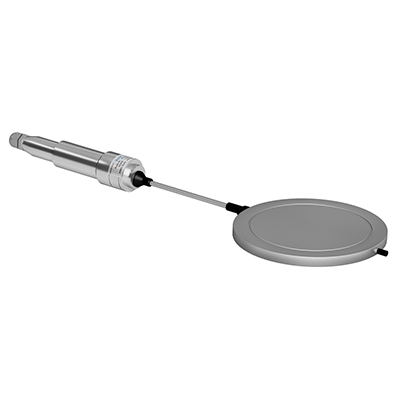
The Model EPS-30V-I Soil and Rock-Concrete Interface Pressure Cell to determine the contact pressure on retaining and diaphragm walls, piers, and abutments.
Model EPS-30V-J Jack Out Pressure Cell
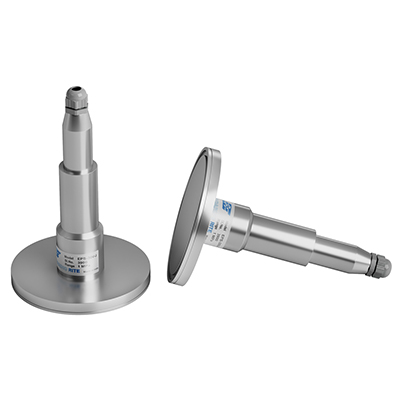
The Model EPS-30V-J Jack Out Pressure Cell to measure the total stress i.e. the effective stress due to the soil together with the pore water pressure in the voids between soil grains. It is suitable for measuring static or slowly varying stresses only.
Model EPS-30V-S Earth Soil Pressure Cell
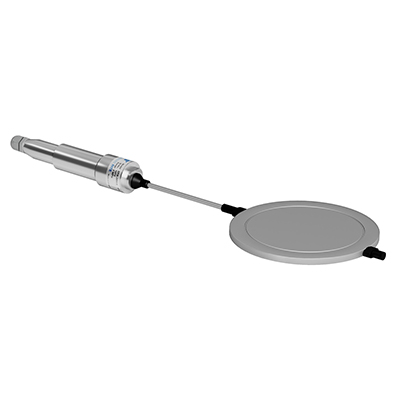
The Model EPS-30V-S Earth Soil Pressure Cell measures pressure on and within the lining of underground excavations. It also monitors stress in the rock walls of unlined caverns and tunnels.
Model ESC-30V Shotcrete-Concrete Stress Cell
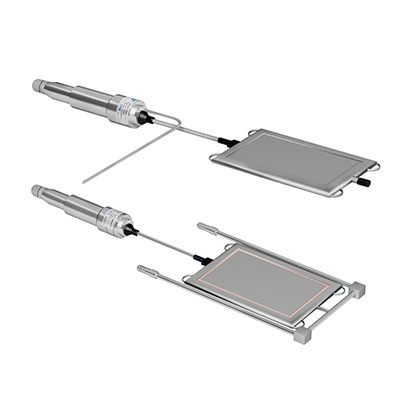
The Model ESC-30V and Model ESC-30V-R Shotcrete-Concrete Stress Cell measure radial and tangential stresses in shotcrete tunnel linings. They are often used in conjunction with the EDS-80 tape extensometer and EDS-64 borehole extensometer to measure the performance of the lining and to determine whether the lining is thick enough to maintain stability.
Extensometers
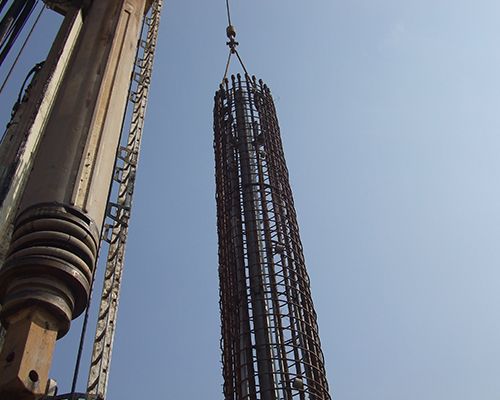 Figure 5: Borehole extensometer at ATS tower, Dubai
Figure 5: Borehole extensometer at ATS tower, DubaiAn extensometer is a high-precision instrument specially designed for geologists or civil engineers to measure the elongation of a material under stress. The instrument is perfect for tensile tests.
It can also determine yield strength, tensile strength, yield point elongation, strain-hardening exponent, and strain ratio, tensile strength, yield point elongation, strain-hardening exponent, and strain ratio.
Read More: Extensometer: Types, How It Works, Applications
Types of Extensometers
Model EDS-63U-D Mechanical Borehole Extensometer System
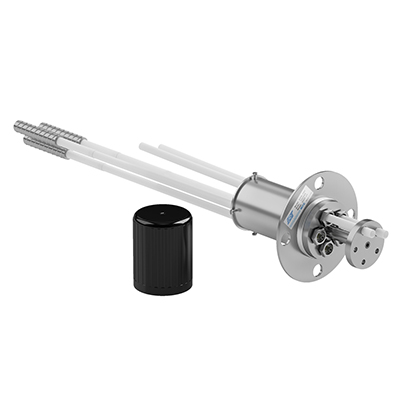
Model EDS-63U-D Mechanical Borehole Extensometer System is ideally suited for upward, downward, or inclined boreholes. It measures the extension (displacement) that takes place with time in a borehole or in several boring holes in a rock mass.
Model EDS-64U-D Mechanical Borehole Extensometer System
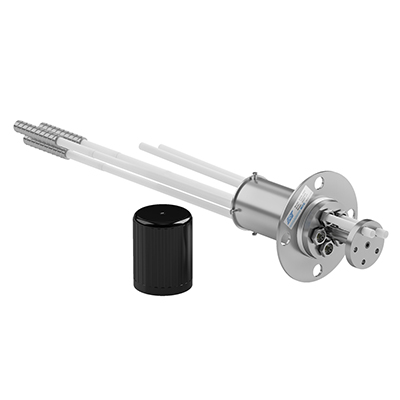
Model EDS-64U-D Mechanical Borehole Extensometer System is suitable for 50 mm upward, downward, or inclined boreholes. It is essential equipment for the investigation and monitoring of foundations, slopes & embankments and for studying the behavior of rock around underground cavities, tunnels, and mines.
Model EDS-70V Electrical Borehole Extensometer System
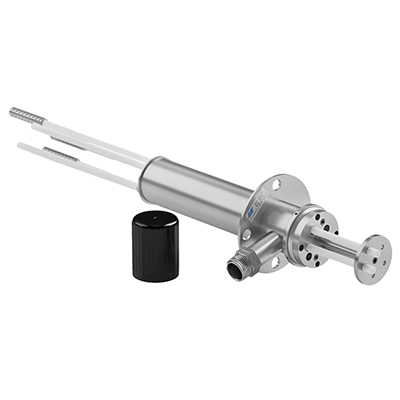
Model EDS-70V Electrical Borehole Extensometer System and Model EDS-71V Electrical Borehole Extensometer System are designed to predict potential roof or wall falls before they occur. Roof or wall fall in an underground cavity is almost invariably preceded by measurable sag as the strata open up and the movement usually occurs at an increasing rate as of fall conditions.
Model EDS-91 Magnetic Extensometer System
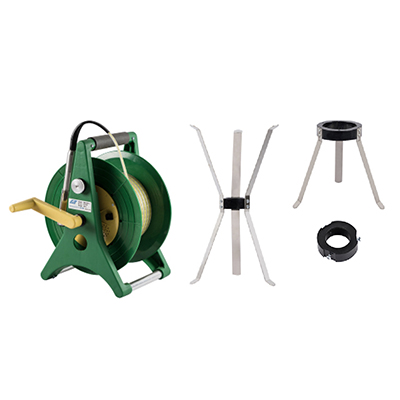
The Model EDS-91 Magnetic Extensometer System is designed to measure settlement or heave of the soft ground under the influence of loading or unloading due to the construction of embankments, fills, buildings, and structures.
Model EMA-11 Measuring Anchor/Rock Bolt Extensometer
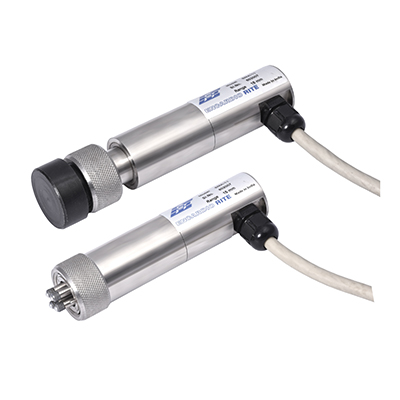
Model EMA-11 Measuring Anchor/Rock Bolt Extensometer consists of a steel hollow anchor/rock bolt with a precise 4-point extensometer integrated into it. The measuring bars inside the hollow bolt have anchor points at each quarter of the total length so that the extension of the rock bolt and the corresponding forces can be determined.
Model EDS-70V/EDS – 70P Electrical Multipoint Borehole Extensometer
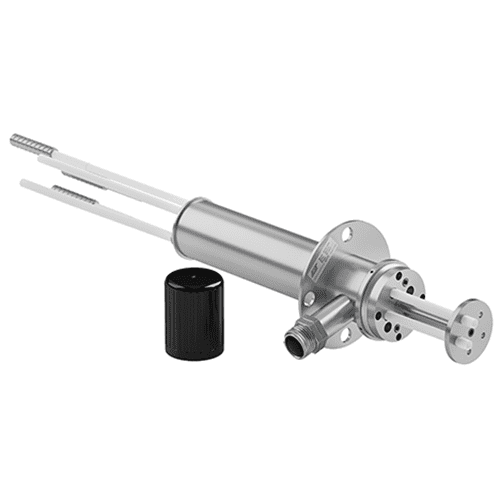
Encardio Rite Model EDS-70V/EDS-70P is a Multipoint Borehole Extensometer that is required for the measurement of extension that takes place with the time in a bored hole (or several bored holes) in a rock mass.
It is very similar to the Model EDS-63U-D, the only difference being that the Model EDS-70V/EDS-70P uses vibrating wire displacement sensors.
Model EDS-92 Soil Extensometer
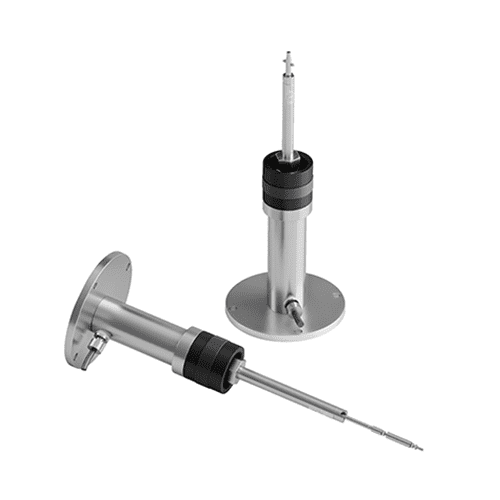
Encardio Rite Model EDS-92 Soil Extensometer is employed for monitoring the displacement between two surfaces subjected to shift concerning each other. Usually applied during the monitoring of soil and rock movement in embankments and dams, the system is equipped with a specially mounted model EDE-VXX vibrating wire displacement sensor.
Any change in the relative position between the anchor beams represents deformation taking place, and is, therefore, measured by the displacement transducer.
Temperature Sensors
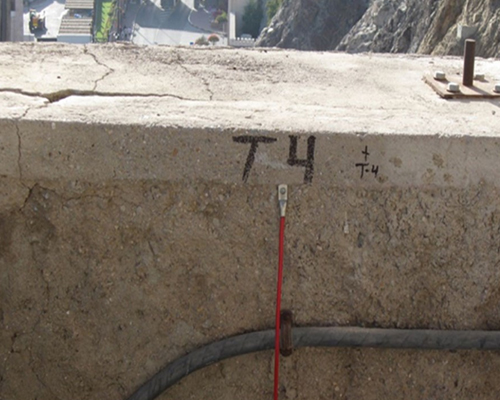 Figure 6: Temperature probe installed at a site
Figure 6: Temperature probe installed at a siteA temperature sensor is a device that is designed to measure the degree of hotness or coldness in an object. The working of a temperature meter depends upon the voltage across the diode. The temperature change is directly proportional to the diode’s resistance. The cooler the temperature, the lesser will be the resistance, and vice-versa.
The resistance across the diode is measured and converted into readable units of temperature (Fahrenheit, Celsius, Centigrade, etc.) and displayed in numeric form over readout units. In the geotechnical monitoring field, these temperature sensors are used to measure the internal temperature of structures like bridges, dams, buildings, power plants, etc.
Read More: Temperature Sensors: Types, How It Works, & Applications
Types of temperature sensors
Model ETT-10V Heavy Duty Temperature Meter
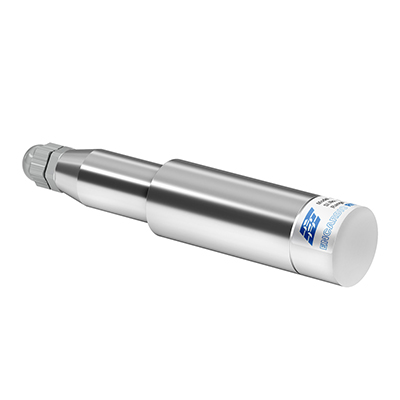
The model ETT-10V temperature sensor is designed for the measurement of internal temperature in concrete structures, soil, or water.
Model ETT-10TH Thermistor Probe
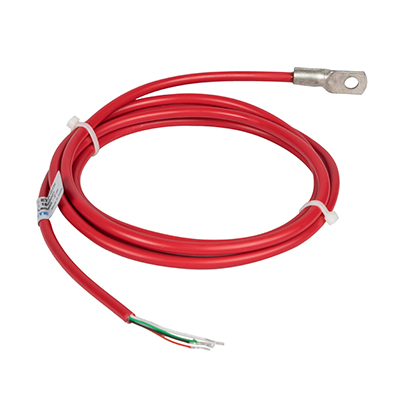
Model ETT-10TH is designed for the measurement of surface temperature of steel and concrete structures, and bulk temperature inside concrete. It can also work submerged underwater.
Model ETT-10PT RTD Probe
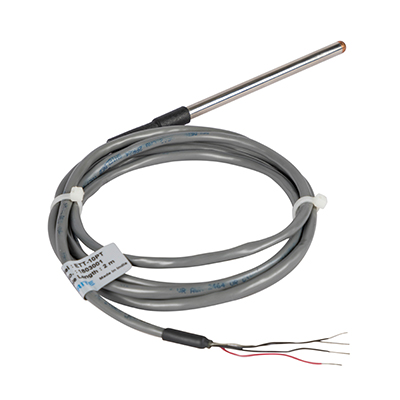
Model ETT-10PT can be used in similar applications as ETT-10TH. The probe has excellent stability and accuracy that makes it well suited for long-term installations where high accuracy and reliability are required.
Thermocouple
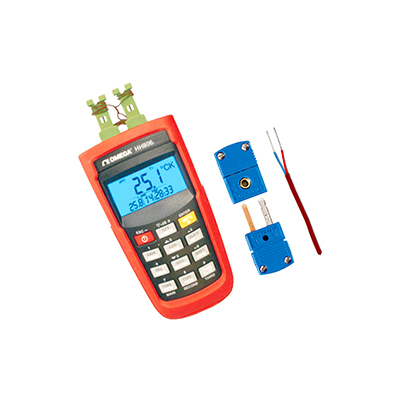
Thermocouple wire consists of T-Copper-Constantan conductors, joined at one end to form a hot junction. This end is sealed against corrosion, and placed at the required location of temperature measurement.
The other end of the thermocouple wire is connected to a suitable thermocouple connector to form a cold junction. The thermocouple readout displays a direct reading of the temperature at the installed location and automatically compensates for the temperature at the cold junction.
Displacement, Crack Meter, Joint Meter
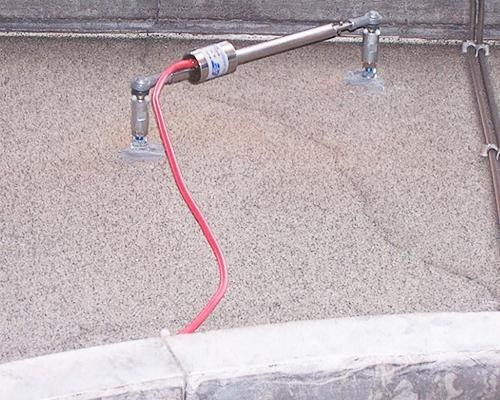
A displacement sensor is designed to measure linear displacement by converting mechanical motions into readable electrical signals. Crack Meters (crack width meter) and Joint Meters are position and displacement sensors/transducers with anchors and ball joints.
Types of Displacement, Crack Meter, Joint Meter
Model EDJ-40C Uniaxial Scale Type
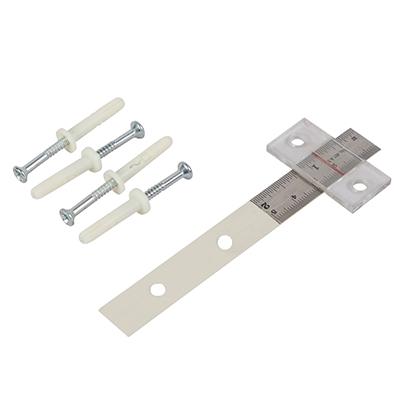
The Model EDJ-40C crack meter can measure the change in the width of a surface crack. It consists of a graduated scale and a transparent acrylic plate with a hairline cursor mark. When installed across a crack, the graduated scale and cursor move relative to each other depending upon the crack opening or closing.
Model EDJ-50V Embendment Joint Meter
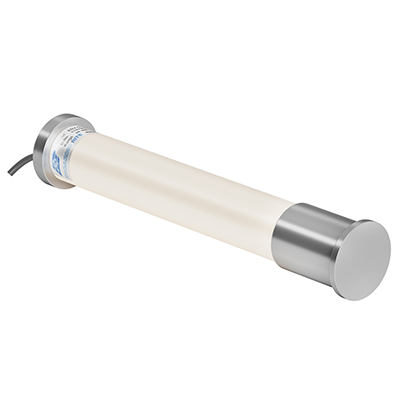
Model EDJ-50V Vibrating Wire Joint Meter is designed to measure the mass movement in construction and submerged joints in concrete dams, structures and bridges, tunnels and shaft linings, rock, soil, and masonry structures.
Model EDJ-41M Uniaxial Bolt Type
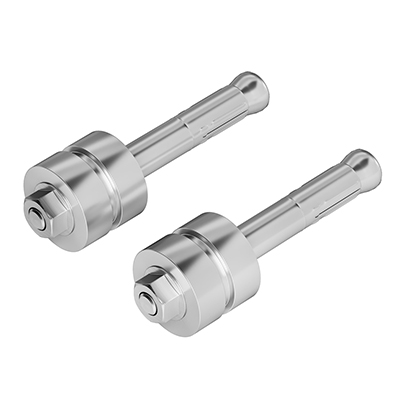
Model EDJ-41M is used for monitoring cracks, joints, and fissures. It consists of two stainless steel round datum blocks that are installed on either side of the opening. A digital inside caliper with a resolution of 0.01 mm is used to measure the distance between the grooves of the datum blocks.
Model EDE-VXX Vibrating Wire Type
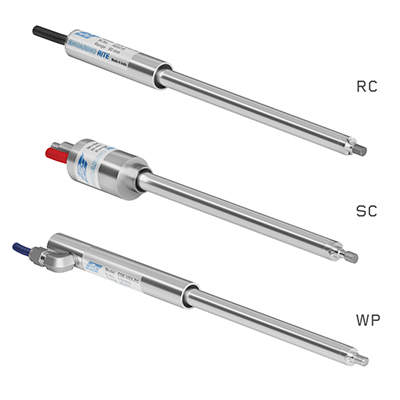
Model EDE-VXX linear displacement transducer incorporates a vibrating wire sensor that converts mechanical displacement to electrical frequency output. This output can be transmitted over long distances.
The sensor can be used in uniaxial joint meters, triaxial joint meters, crack meters, borehole extensometers soil extensometers, etc.
Model EDE-PXX Potentiometric Type
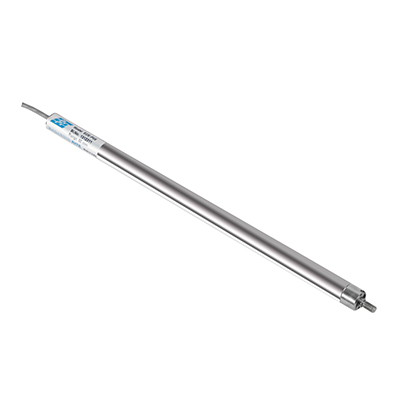
Model EDE-PXX linear displacement transducer incorporates a potentiometric sensor. The application is the same as that of EDE-VXX.
Model EDJ-40V Surface Crack Meter
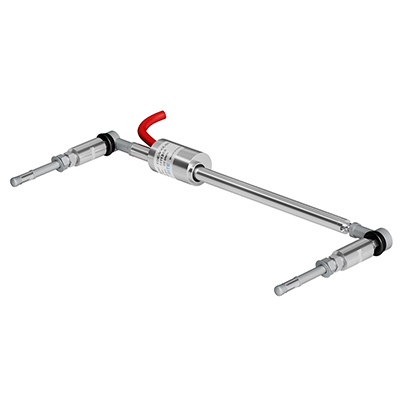
The Model EDJ-40V crack/joint meter is designed for surface installation and consists of an EDE-VXX vibrating wire displacement transducer fixed between anchors, installed on opposite sides of the crack/joint.
Model EDJ-40T Triaxial Crack/Joint Meter
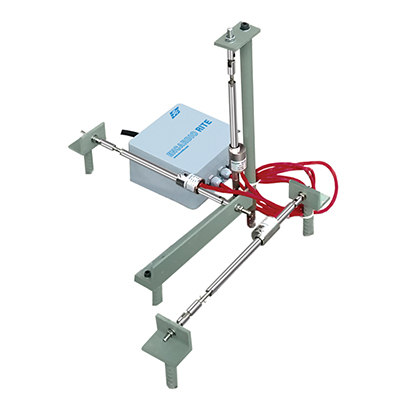
The Model EDJ-40T is a triaxial joint meter with three EDE-VXX vibrating wire displacement sensors, flexible joints, and accessories available for monitoring joint movements in the X, Y & Z directions. A typical configuration using the model EDE-VXX sensor is shown in the picture.
Model EDJ-40TJ Triaxial
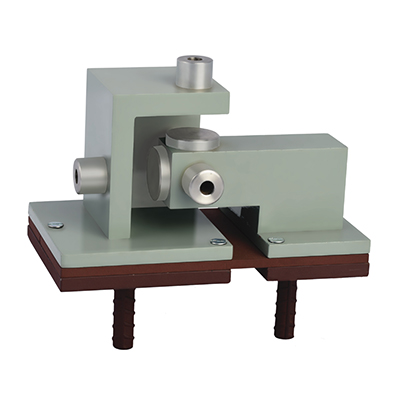
The Model EDJ-40TJ used for surface measurement consists of two-precision machined elements attached to reinforce bar anchor stems. Measurement is made by anchoring the two elements on either side of the joint/crack and accurately measuring the distance between them over some time with a depth gauge of 50 mm range and 0.01 mm resolution.
Model EDJ-40C2 Biaxial Scale Type Mechanical Crack Meter
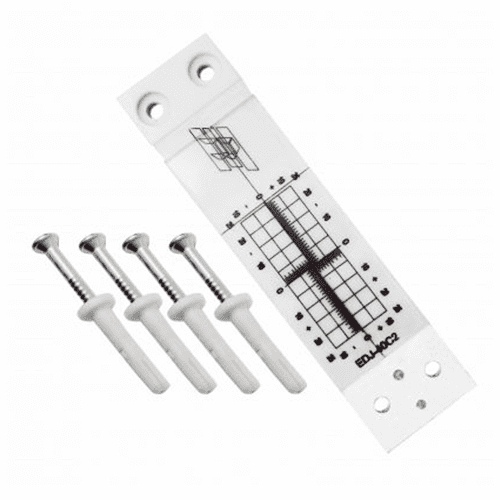
Model EDJ-40C2 is a biaxial mechanical crack meter with a marking of ±25 mm (x-axis) and ±10 mm (y-axis). It is ideally suited for measuring the change in width of a surface crack to a resolution of 0.5 mm or shearing.
Readout Units
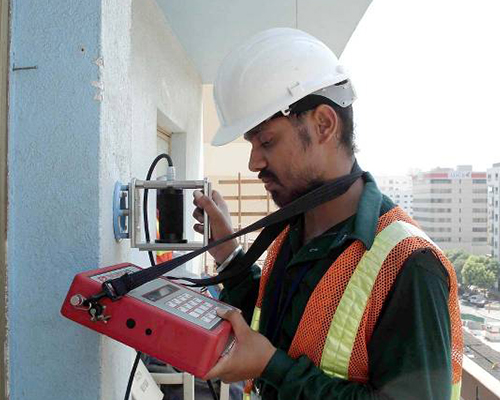 Figure 7: Readout Unit
Figure 7: Readout UnitA readout unit is a microprocessor that displays the output data. It can be connected to several geotechnical instruments to record the readings that can either be uploaded to a host computer or printed out on any text printer using the serial interface.
Being the world’s leading manufacturer and supplier of digital readout for geotechnical sensors, Encardio Rite deals with two different robust, accurate, rugged, reliable, and low-cost digital readout systems.
Types of Readout Units
Model EDI-53 Portable Read-Out Unit/Data Logger
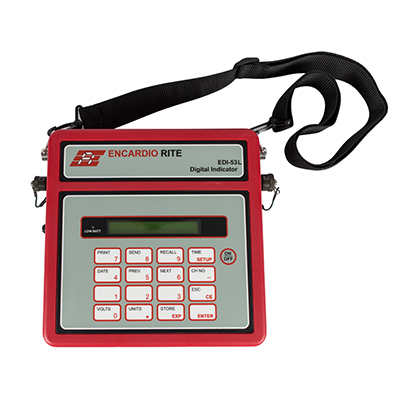
The Model EDI-53 readout unit comes in five variants as described below. The unit displays the measured parameter directly in applicable engineering units. It has memory to store 3600 readings with date and time from up to 250 sensors.
- Model EDI-53L: EDI-53L is used for resistive strain gauge sensors including load cells.
- Model EDI-53ELV: EDI-53ELV is used to read electro-level tilt meter and stores data in volts (Value in engineering units can be calculated in Microsoft Excel sheet using polynomials coefficient given in test certificate of tilt meter).
- Model EDI-53P: Model EDI-53P is used to read potentiometric displacement transducers with 0-2 V full-scale voltage output.
- Model EDI-53I: EDI-53I is designed to read transducers with 4-20 mA DC output.
- Model EDI-53UTM: EDI-53UTM is designed for use with Encardio Rite’s range of uniaxial tilt meters. However, with an external switch, it can also be used with biaxial tilt sensors.
Model EDI-54V Vibrating Wire Indicator
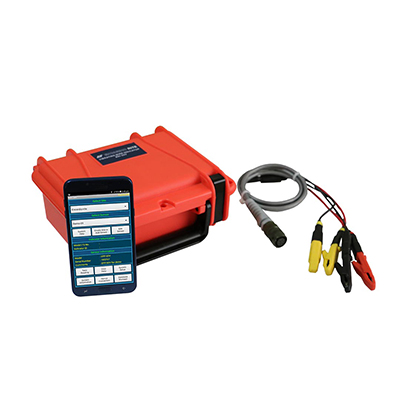
Encardio Rite Model EDI-54V indicator is an advanced micro-processor-based unit that can be used to log data from Encardio Rite's range of vibrating wire sensors. The indicator uses a smartphone with Android OS as readout with a user-friendly software for configuration, retrieving, and viewing sensor data.
Geodetic Targets & Survey Markers
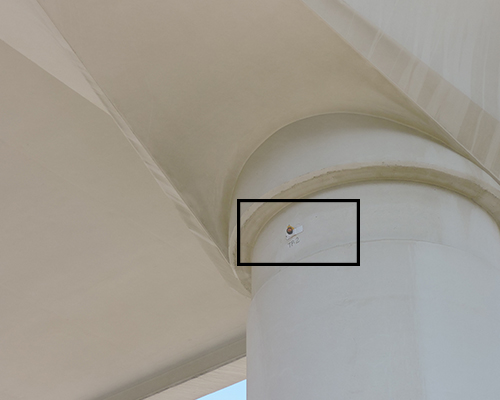 Figure 8: Bi-reflex target installed on a bridge pier
Figure 8: Bi-reflex target installed on a bridge pierGeodetic targets are extensively used for the measurement of deformation during tunneling and subway construction and for monitoring the displacement of a bridge, dam, slope, or building structure.
Model ERT-10B Bi-Reflex Target
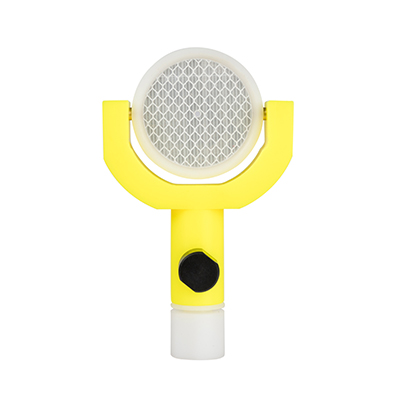
ERT-10B consists of reflectors on both sides mounted on a universal joint. The target has a small center hole to allow precise targeting. Targets are interchangeable.
Model ERT-10P2 Prism Target
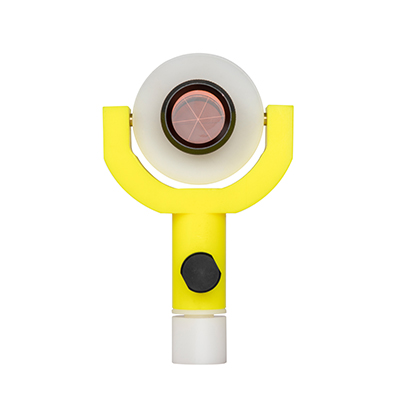
ERT-10P2 consists of a mini prism mounted on a universal joint such that it can be oriented in any direction as required. The prism is copper-coated.
Model ERT-20P2-M1 Mini Prism Target
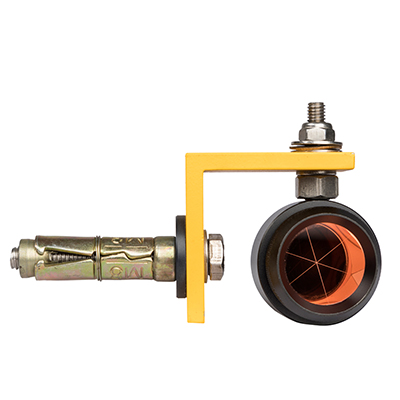
ERT-20P2-M1 mini prism target consists of a prism mounted on a swivel bracket. The prism is copper-coated.
Model EBS-16 Building Settlement Point
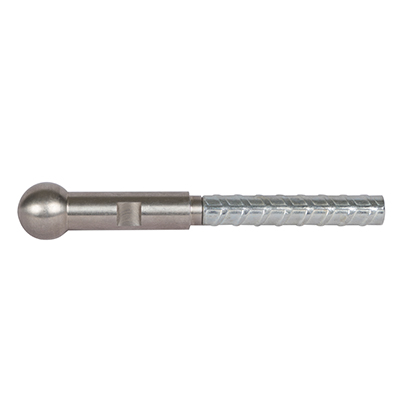
EBS-16 building settlement consists of a spherical reference locator with a threaded bolt.
Model EPS-12 Pavement Settlement Point
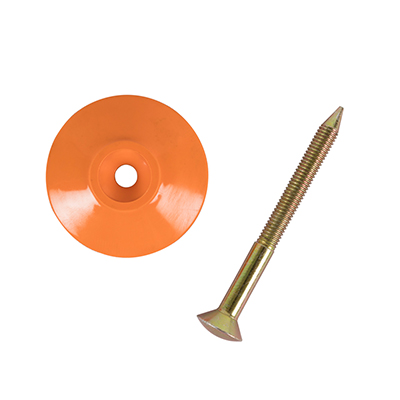
EPS-12 pavement settlement point consists of a plastic tapered disc and a special retaining nail.
Model ESMP-10/ESMP-11Ground Settlement Point
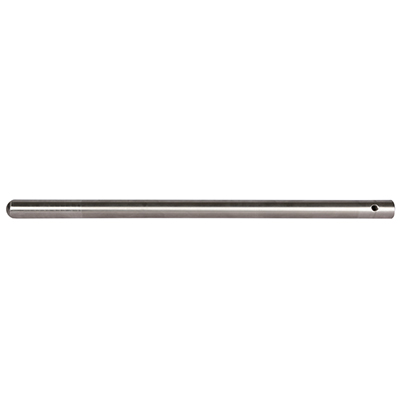
ESMP-10 comprises an AISI-304 survey pin having a semi-spherical top. A red colored cross mark is provided at its top.
Model TCB
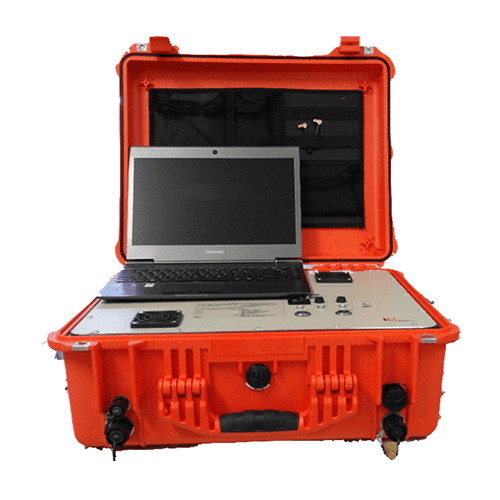
For real-time geodetic monitoring, displacement data is measured from the prism targets by a high-precision automatic/robotic total station (ATS). Encardio Rite offers an in-house developed model TCB control box with advanced software to control the robotic total stations. This results in an automatic three-dimensional (3D) deformation monitoring system with the highest accuracies achievable in the industry presently.
Model EAWS-101 Automatic Weather Station
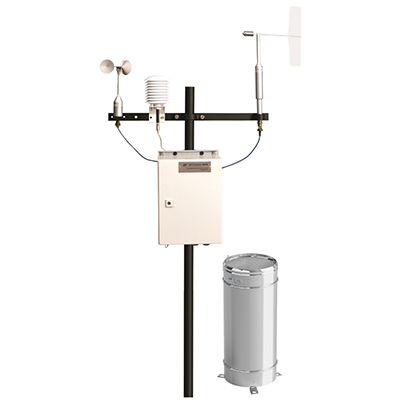
Encardio Rite Model EAWS-101 automatic web-based weather monitoring station provides a precise, reliable, and cost-effective means of recording meteorological data. Encardio Rite offers a weather system with standard sensors for essential parameters as briefly outlined below:
Rain gage: Model ERG-200/201 tipping bucket type rain gage with stainless steel housing.
The weather station can be configured based on parameters to be measured or sensors required. It handles all data processing requirements, starting with the collection and storage of data, performing required calculations on data, presenting results in graphical and numerical format, and generating alarm messages. It also has the option to monitor meteorological data remotely from an internet-connected computer.
Data Loggers
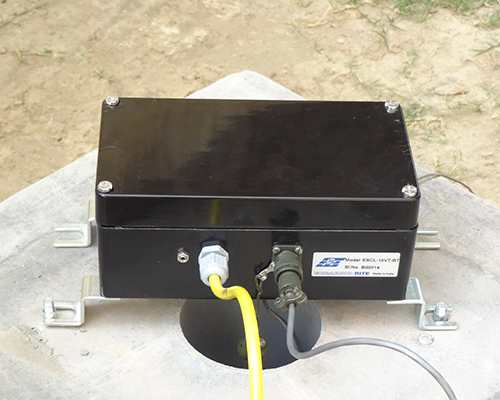 Figure 9: Data Logger installed with groundwater level monitoring system
Figure 9: Data Logger installed with groundwater level monitoring systemThe data loggers or data recorders are microprocessor-based, battery-operated devices that are used to log real-time data from various geotechnical sensors and display them in a readable format. The data loggers are a stand-alone device and they are used to keep a constant check on the structure’s health monitoring parameters such as pressure, strain, stress, water level, temperature, etc.
Read More: Data Loggers: What is it, Types, Applications & How it Works?
Types of Data Loggers
Model ESDL-30 Data Logger with SDI-12 Interface
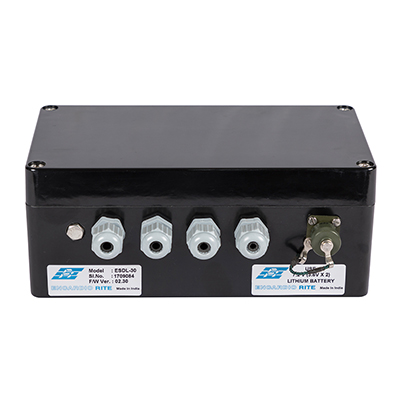
ESDL-30 series data logger is designed to log data from any geotechnical, structural, groundwater, or environmental sensor with an SDI-12 digital interface. It can be programmed to measure from 5 seconds to 168 hours in linear mode. All the measured data is stored together with the current date, time, and battery voltage, as a data record in the internal non-volatile memory of the data logger.
Model ESCL-10VT Single Channel Data Logger
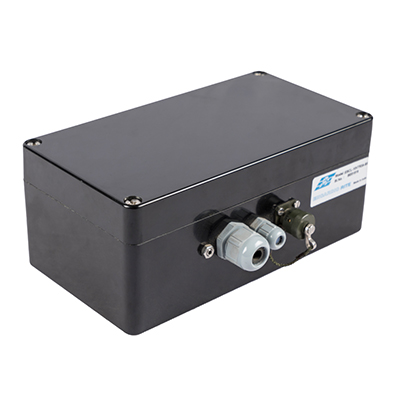
Model ESCL-10VT single-channel vibrating wire data logger is designed to monitor a single vibrating wire sensor (including temperature) such as a piezometer, crack meter, or displacement transducer. The data logger can additionally monitor barometric pressure and rainfall, using a tipping bucket rain gauge.
Model ESCL-12VT Single Channel Datalogger for Vibrating Wire Sensors
Model ESCL-12VT single channel data logger is designed for collecting data automatically from any vibrating wire sensor with an integral thermistor. With the telemetry option, it transfers the data to a cloud/private server through an in-built GPRS/GSM modem at set intervals. The schedule can be set as fast as 5 minutes. Automatic collection and wireless transmission of data help reduce field costs and provide easy access to near real-time data with early alarms.
Data Loggers with RF Transmission
In our end-to-end wireless monitoring system, the sensors are interfaced with the long-range, low-power wireless network through nodes that send recorded data to the Gateway with utmost reliability. Gateway uploads the collected sensor data to the central/cloud server.
Encardio Rite offers the following range of wireless products:
| EWN-01V | Vibrating wire node – 1 channel. To be used with a vibrating wire sensor |
| EWN-08V | Vibrating wire – 4 channels. To be used with a vibrating wire sensor |
| EWN-01D | Digital node. To be used with SDI-12 interface sensors |
| EWN-01A | Analog node – 1 channel. Suitable for sensors with millivolt, voltage, 4-20 mA, Wheatstone bridge outputs |
| EWN-04A | Analog node – 4 channels. Suitable for sensors with millivolt, voltage, 4-20 mA, Wheatstone bridge outputs |
| EWN-01R | Relay node. To enhance the range of any node |
| EWG-01 | Gateway. To collect sensor data from nodes, upload collected data to the Encardio Rite cloud server or a third-party server |
| EAN-95MW | Wireless tiltmeter. It is a complete unit in itself including the sensor and the node |
Read More: Type of data loggers and how they work.
Water Level Monitoring
Groundwater is one the fastest depleting freshwater resource and, hence, it needs to be monitored continuously. A regular check on water levels ensures equal and uniform distribution among all.
Model EWLR-101Automatic Groundwater Level Monitoring
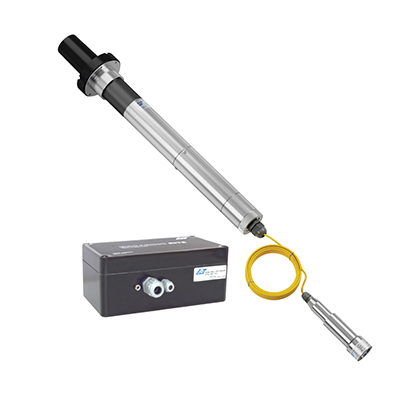
Model EWLR-101 automatic water level monitoring system provides significant quantitative data on the magnitude of the water column, water table, and temperature in a borehole. The monitoring system is a set of absolute water level sensors with cable, automatic data logger, and required data retrieval/transmission options.
The data logger is programmed to automatically store the water head/pressure data at fixed intervals with a minimum scan/upload interval from five seconds to 168 hours with different options to download data.
Data can be remotely transmitted at scheduled times with telemetry (GSM/GPRS inbuilt modem) or downloaded on a laptop/mobile in the field through Bluetooth or a cable.
Model ECTD-30V, ECTD-60V Conductivity Sensor with Water Level and Temperature
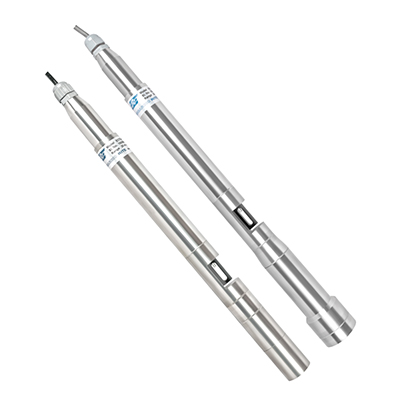
Model ECTD-30V and ECTD-60V CTD sensors are available for monitoring electrical conductivity, water level, and temperature in the ground. These are robust, marine-grade sensors.
Model ECTD-30V CTD probe comes with the model EPP-30V absolute pressure sensor and ECTD-60V CTD probe comes with model EPP-60V absolute pressure sensor. The ESDL-30CTDB data logger, which collects the data from these sensors, has much of the complex circuitry, lowering the cost of individual sensors without impacting their accuracy or resolution.
Model ERG-200/201 Rainfall Gage
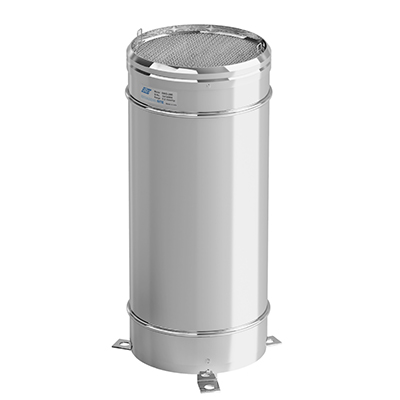
Model ERG-200/201 rain gauge with a proven tipping bucket mechanism provides a cost-effective and reliable method for measuring and recording rainfall. It is corrosion resistant having a stainless steel outer housing, designed for many years of trouble-free operation. Each rain gauge is individually calibrated for optimum accuracy. It comes with an SDI-12 interface unit that makes it compatible with the ESDL-30VB data logger.
Settlement
Model EGS-30V Settlement Measurement System
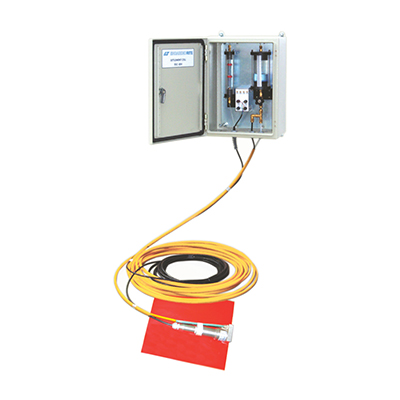
EGS-30V settlement measurement system is designed for monitoring settlement in fills, embankments dams, etc. It comprises a vibrating wire sensor connected to a reservoir via a fluid-filled polyethylene sheathed twin nylon tubing.
The sensor is installed in soil fill and the reservoir is mounted on firm ground. As the sensor settles with the surrounding soil, the fluid head at the sensor increases. The change in the measured head is the settlement relative to the reservoir.
A manifold system is optionally available to connect up to seven sensors to the same reservoir.
Model ESM-30V Liquid Level Settlement System
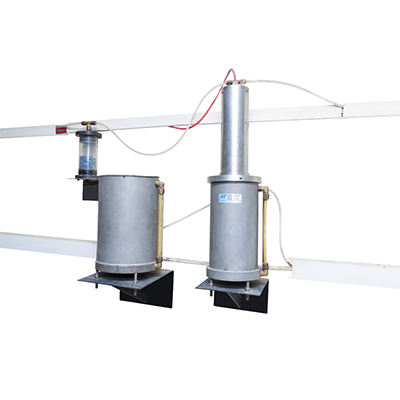
ESM-30V is a high-sensitivity liquid-level settlement measuring system that uses a low-range vibrating wire force transducer with a submersible cylinder suspended in a fluid-filled vessel. It is designed for remote measurement of minute differential settlement in tunnels, bridges buildings, etc. with high precision.
The settlement of any vessel installed, causes a change in its fluid level, affecting the buoyancy of the suspended cylinder. The ESM-30V is provided with two or more settlement systems with fluid-filled vessels interconnected in series by a fluid-filled tube.
Model EHOS-35 Hydraulic Overview Settlement Monitoring System
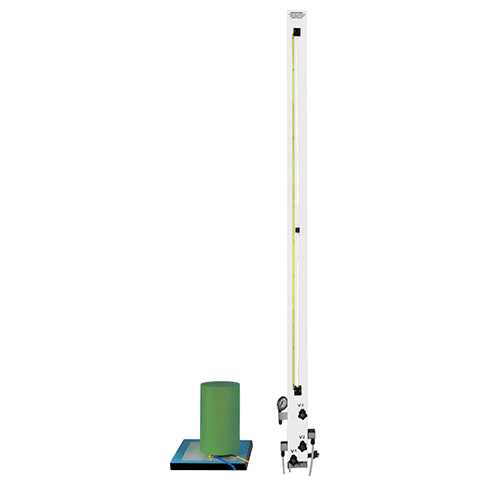
The Model EHOS-35 hydraulic overflow settlement system is suitable for the measurement of settlement or heaves in an embankment of a dam or infills where the settlement cell (sensor) and terminal structure or observation room can be nearly at the same elevation.
This was all about geotechnical monitoring, geotechnical instruments, their types, and applications. Feel free to drop your comments/questions below.